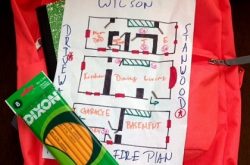August 23, 2016
As another summer wanes, a new school year approaches. School supply checklists are made. Households throughout the United States prepare by re-acclimating children to earlier bed times, checking bus schedules, and making sure uniforms fit.
But are you forgetting the most important thing?
Your child’s safety.
Emergency preparedness plays a major role during the school year as students actively practice what to do in case of an emergency inside the classroom. But that preparedness extends beyond the boundaries of the school yard.
Parents: Make sure your scholars are fully ready to return and in turn spend some quality time with them, away from electronic devices, with a few simple steps.
PLAN
- Sit with your family and write down your Family Emergency Plan. The start of a school year is the perfect time for a refresher course in readiness.
- This includes a communications plan, filling out an emergency contact form, and meet-up locations if your family has to evacuate your home.
- Have an emergency escape plan for your home. Let your kids be the boss and draw your house. They can mark the escape locations as you walk through your residence.
- Make sure to practice your plan at home. Have fire drills and make sure you use different exits every time you practice.
- Have a unique meet-up location away from your home. Practice getting to your emergency meeting place from school, friends’ homes, and after school activities.
- Stay in the know. Follow social media accounts for your child’s school, police, fire, and emergency management officials. Philadelphia Office of Emergency Management offers a free text and email service, ReadyPhiladelphia. You can sign up for free weather and emergency alerts for up to five locations, which may include your child’s school, their caretaker, your work, and your home.
CONTACTS
- Schools often collect emergency contact information when a student first enrolls at a school, but a lot can change over a year and so may your info.
- Make sure you are accurate and up to date: report changes of your primary contacts phone numbers and email addresses to make sure the school has the most up-to-date information.
BACKPACKS
- Sit down and make an emergency card for your child’s backpack.
- Important information about your child; their name, school, contact information, date of birth, and any medical conditions (such as allergies) should be included.
- On the reverse of the card, include contact information for you and an additional emergency contact. Kids are rough on their backpacks, so consider laminating the index card before placing it somewhere secure in the bag.
MEMORIZATION
- Depending on the type of emergency, schools may not be able to access their emergency contact files.
- Make a memory game for the most important phone numbers and addresses. Kids should know their home address and at least two emergency contact phone numbers.
Follow Philadelphia Office of Emergency Management on Twitter. Like us on Facebook.

